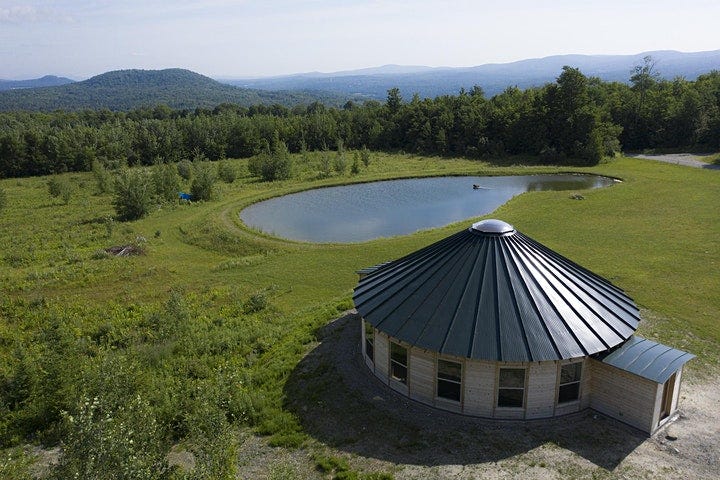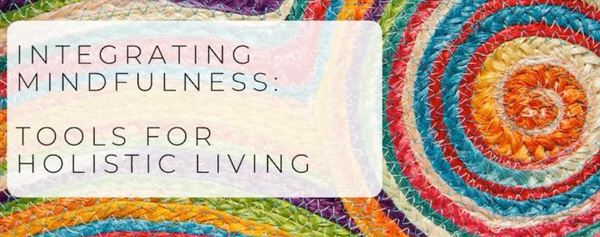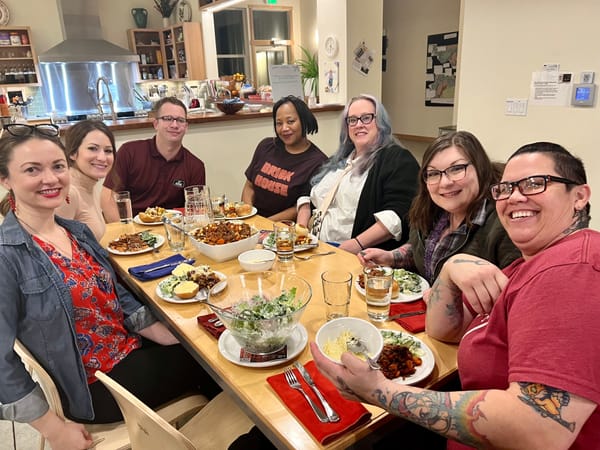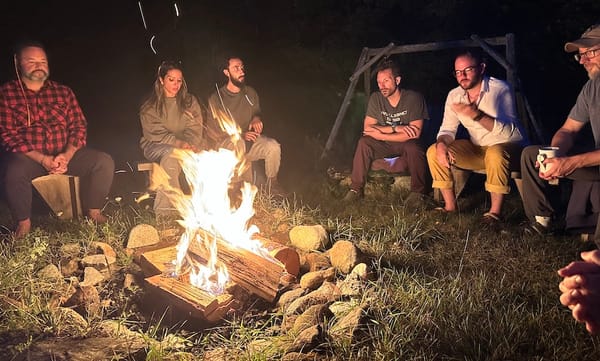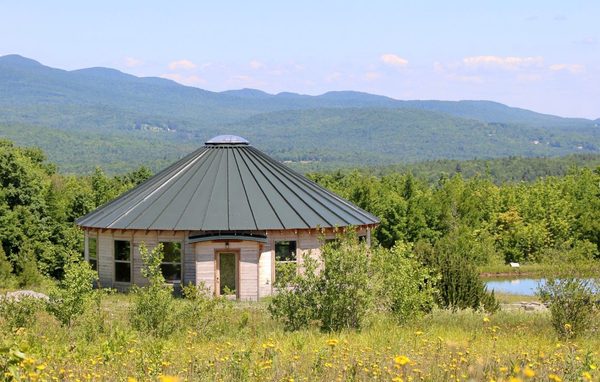Monastic Academy: Take Two
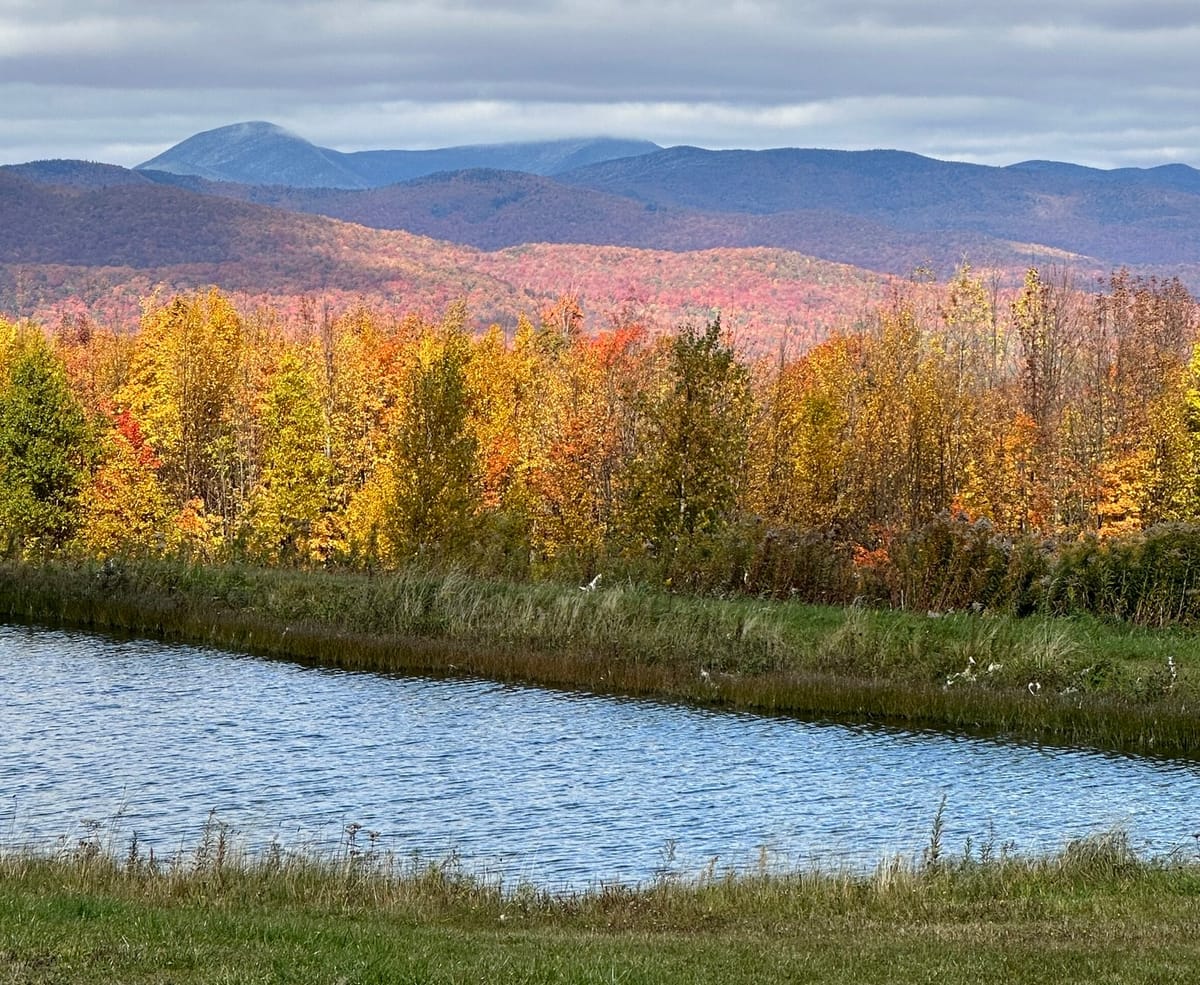
When I decided to go and meet both Layman Pascal and Bonnitta Roy on a single plane ticket this fall, I reflected on my positive experience at the Monastic Academy the previous year and didn't hesitate to sign myself up for another two weeks of "modified monasticism" in between programs. I knew it would be good for me, and I figured it would be a great way to cap off this year's adventures in learning to travel alone.
Rural Vermont is the only place in the country I have found to be more naturally beautiful than my beloved Eastern Washington. We may still win out on geological interest and recreational opportunities, but for quaint agricultural landscapes, the Northeast Kingdom is tops. It's like home, but with a few more inches of rain every year to keep the brown crunchies at bay in the fall. The lush deciduous forests of Vermont have some of the most vibrant autumn colors in North America, and it can be hard to get a room in the area due to all the "leaf peepers" who come from their respective cities.
In short, it's peak Shire meets Anne of Green Gables around here.
This time there was no "shock of the new" factor at play. I knew the healthy challenge I was getting myself into, and I was pleased to see many familiar faces despite the large number of practitioners this organization has graduated out into the world.
Subtractive Thinking
Upon arrival I had to undergo a rigorous sniff test. Yes, you read that right! The organization maintains a strictly hypo-allergenic environment due to the chemical sensitivities of participants, and so I left as many scented items as I could in my rental car. Even still, the few hours drive to get there was long enough that the "new car smell" of my rental had seeped into my jacket, and so I was asked to quarantine it inside the vehicle where it had acquired its aroma. I had also failed to bring some of my favorite locally made unscented natural deodorant, and so had an opportunity to experience the surprising multi-day effectiveness of a provided mixture of salt, coconut oil and baking soda instead.
Buddhist practices often take advantage of the power of subtractive thinking to encourage insight and attainment in a variety of elegant ways. For those who aren't familiar, subtractive thinking is the simple approach of looking for ways in which reducing factors or inputs can help solve a problem, rather than our more common strategy of adding more into the mix. Sometimes less truly is more, and you begin to appreciate this after a few weeks of chosen "deprivation." Whether it is introducing fewer opportunities for distraction through silence or refraining from unnecessary physical movement during a meditation session, it is fascinating what you can discover (and what kind of work you can get done!) when you peel back even a few layers of our daily experiences.
My under-preparation for the dress code of "dark and loose" meant I wore just a few outfits for the entire visit, reducing my daily dilemma of discerning "what to wear today?" into more energy to depart for 4:40am meditation. Walking around without shoes on increases your awareness of how your body is landing in space, what you are stepping on, and even the cleanliness of the floors.
Towards the end of my stay I ran into a new arrival in the parking lot as I was heading into town for some personal groceries. As I greeted my friend, this time I was the one who was overpowered by the smell pouring out from the open door of my car. It was so strong it was distracting me from our conversation! I closed the door and the sweetest breeze of real cedar wafted in from the forest. "How do we live like this without even noticing?" I wondered aloud.
Training the Tongue
It can be easy to "see" how a cluttered room could serve as a source of distraction when trying to get something done, but just "as without, so within" is often true, taste is another surprising internal way to model the process of clarifying our minds through meditation. The kitchen at the Monastic Academy is strictly vegan. No dairy, no eggs, no meat and no honey, unless someone chooses to donate some. The simplicity of the two daily meals is in itself a thoughtful training. At first you may feel like something is missing and you'd be right, mainly sugar. But after your palette adjusts to the subtleties of real food and your mind gets over the western aversion of "vegetables for breakfast," many healthful delights await your discovery.
In addition to various fun facts and tricks I learned offering service in the kitchen, I came to appreciate the creamy sweetness of a bowl full of kidney beans with nothing more than a pinch of salt in them. A dollop of coconut oil replaces expensive and energy intensive milk products in the morning mash of oats, which are sometimes spiced with turmeric or curry powder instead of brown sugar. I learned to make fresh gazpacho with organic tomatoes from a neighboring farm, and I substituted flax seeds and almond flour for eggs and breadcrumbs in a recipe for squash croquettes. I'd been wanting to eat more simply at home for quite some time, and so it was especially rewarding to be finally shown several practical ways how. (Ask me later about "Gyatso Broth" and the success of Vegan and GF pumpkin cake!)
As if these micro-revelations of stripping away weren't enough on their own, the impact of eating well on the whole mind-body system was further heightened by the opposite: junk food available at the nearest town convenience store. One night while eating processed cheese crackers and pizza for dinner I noticed how "ucky" my system felt. Ever the curious chemist, I looked into the ingredients on my package label, and sure enough there was an undisclosed amount of TBHQ in the palm kernel oil - a known carcinogenic preservative. Enough little "turn-arounds" like this and they begin to suggest their own way of re-approaching daily life. I didn't just get to eat better for a few weeks, because I can't un-taste or un-smell these experiences, I'm confident I'll be better able to live up to my own modest ideals into my everyday future as a result.
Body Awareness
Another new experience during this visit was the opportunity to engage in "interviews" with the onsite teacher. These are like free mini-coaching sessions during the morning meditation period that are focused on whatever your goals are in your practice. I learned a lot about how specific posture and breathing techniques are profound tools for cultivating concentration, and how sitting with slight discomforts in the body instead of trying to correct them can be understood as a method for working to cut the roots of attachment. I don't know about you, but I certainly have a few worldly attachments that would be beneficial to cut!
With all this somatic sensing inward, pulling back my forward neck, opening my hunchy clavicles, lifting my spine, tilting my pelvis to make the shape of a "J" instead of an "S," I began to notice other things about my body as well. I realized why my toes are still experiencing mild numbness even though I've rid my wardrobe of uncomfortable footwear: when I sit in a chair I have a tendency to draw my feet up on the legs of the chair, putting a lot of pressure on the tips of my toes which reduces circulation there. You can't begin to adjust deeply held somatic stress responses until you notice them first. At the risk of TMI, I realized that half the time what I thought were mild cramps was actually being just a little bit gassy!
As moderns, we need to learn how to get back into our bodies if we are to have a hope of staying grounded in our complexifying world. My big takeaway from this visit is a new appreciation for how meditation, where you are working on your mind and sitting still for long periods of time, ironically seems to be an exceptionally powerful full body sport ideally suited for this job!
Missed my first Monastic Academy essay? Read it here now:
https://www.thespovangelist.com/monastic-academy-take-one/
Think you might like to live in an environment like this for a while? Read about Joe's decision to become a resident:
